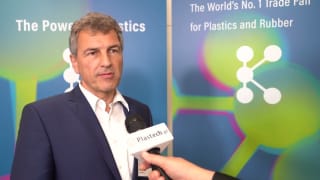Tie-bar-less Engel victory boosts productivity-to-floor-space ratio
Tie-bar-less injection moulding machines allow for extremely compact production cells, facilitate mould changing and support efficient automation. In its medical exhibition area, Engel will be demonstrating how these benefits can also be achieved in production in other industries featuring a hydraulic Engel victory tech tie-bar-less machine.As mould mounting platens on a tie-bar-less clamping unit can be used fully, right up to the edge of the platen, large and bulky moulds fit on relatively small machines. This means that in many cases a smaller machine can be used for the same mould size than compared to a machine with tie bars. The efficiency potential is particularly large in manufacturing complex components, the use of multi-cavity moulds as well as multi-component processes. What these applications have in common is that, although the moulds are large, the required clamping force is low, due to fairly small, projected part surfaces. All over the world, tie-bar-less injection moulding machines represent one of Engel's biggest revenue sources. The tie-bar-less Engel victory is the top-selling Engel machine in China.
Other machines on exhibit at Chinaplas 2015 include an Engel duo 2550/600 large-size machine with an integrated Engel viper 20 linear robot in the Automotive exhibition area, and an all-electric Engel e-cap 440/100 injection moulding machine, which will be producing caps for drinks bottles with a 24-cavity mould at the stand of Engel partner HTW Formen- und Fertigungstechnik (Ludesch, Austria) in Hall 9.2 (B61).
New Engel e-pic combines linear motion with a swivel arm
Robots are increasingly becoming fixed components of any injection moulding machine in China. "The production of premium parts depends on reproducible cycle times, which can only be achieved through automation," says Gero Willmeroth, citing one of several factors that have caused the percentage of system solutions to continually grow in the order books of Engel Machinery (Shanghai). Another factor is that automation, as an integrated part of the process, supports new processes, component functions and product qualities, thus substantially improving the plastics processor's competitiveness.Chinaplas 2015 takes this trend into account with a special event. Engel is involved in the event with a second stand of its own in the "Robot Parade" in Hall 4.2, directly one floor above the Engel main stand. One highlight there is the new Engel e-pic small-size robot which will be presented for the first time in Asia. The objective in its product development was to be able to offer a powerful but economical solution for easy part removal, sprue separation and controlled depositing, grid depositing and stacking of small components. The totally new kinematics makes a decisive contribution towards achieving this by combining linear and swivelling movements. The swivel arm moves in the direction of the x-axis, which thus completely disappears or merges with the y-axis to form a single unit. This means that the Engel e-pic needs far less space than a linear robot in the direction of both the injection and clamping sides. It can be integrated within the injection moulding machine's safety perimeter, thus keeping the entire production cell compact. Another efficiency factor is the use of weight-optimised parts which keep the accelerated masses low. In this way, the servomotor-driven robot can thus achieve the shortest possible part removal cycles, and it only has low energy requirements. In comparison with linear robots of the same size, the Engel e-pic only needs half the amount of energy or even less.




